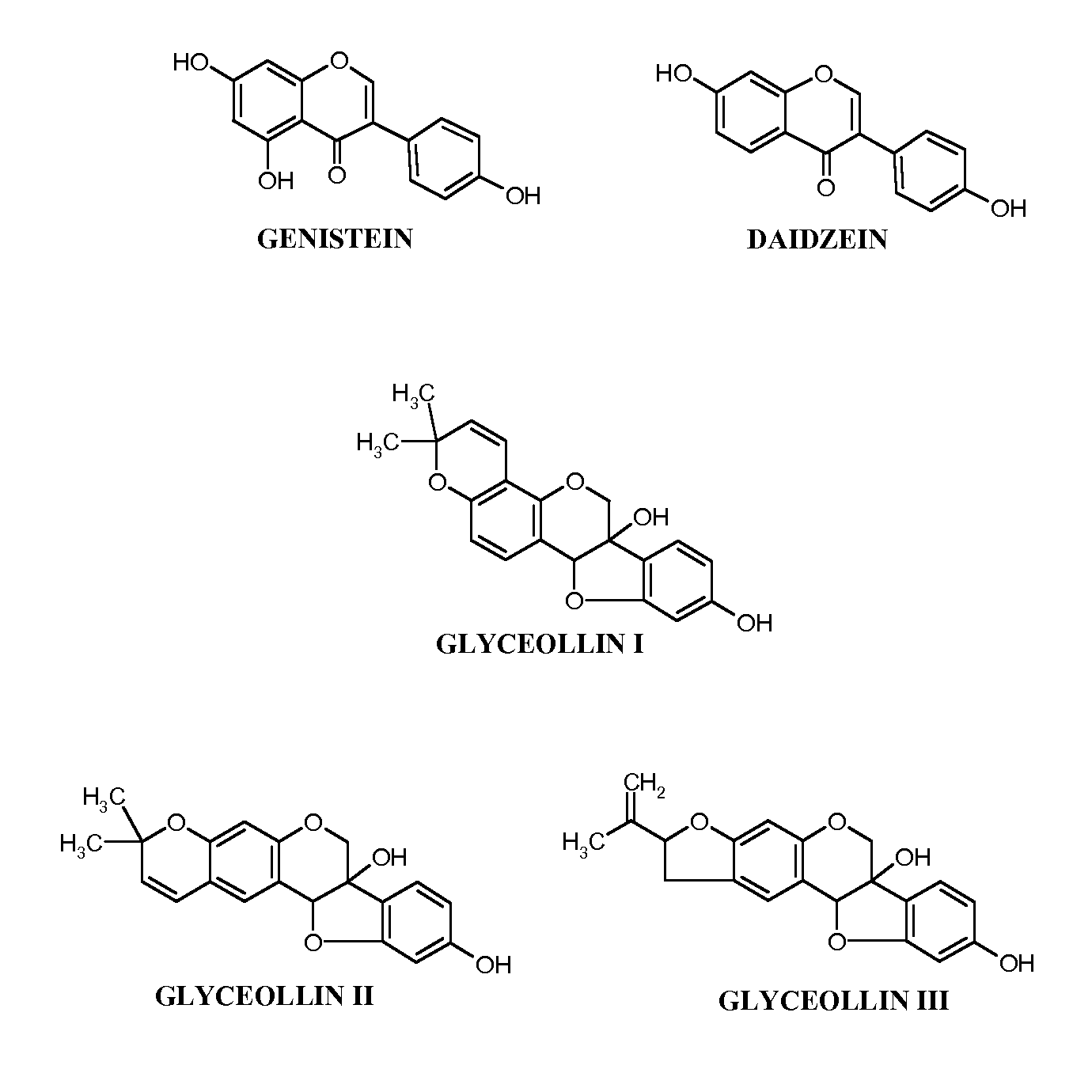Glyceollins Suppress Androgen-Responsive Prostate Cancer
a prostate cancer and androgen-responsive technology, applied in the direction of biocide, tumor/cancer cells, drug compositions, etc., can solve the problems of serious prostate cancer treatment options, long-lasting effects, and reduced risk of prostate cancer and other forms of cancer, so as to prevent or minimize the development or growth of prostate cancer, and prevent or minimize the effect of prostate cancer
- Summary
- Abstract
- Description
- Claims
- Application Information
AI Technical Summary
Benefits of technology
Problems solved by technology
Method used
Image
Examples
example 1
Effect of Glyceollins and Genistein on Prostate Cancer Cell Growth
[0064]To examine the effects of glyceollins on prostate cancer prevention, we first tested the effects of glyceollin on LNCaP cell growth. As shown in FIG. 2, after 72 hours treatment, glyceollins inhibited LNCaP cell growth in a concentration-dependent manner. The inhibitory effects of the glyceollins can be observed at 2.5 μM. The growth inhibitory effects of the glyceollins on LNCaP cells were similar to that observed for genistein (FIG. 2). However, in the androgen non-responsive prostate cancer cell PC-3 (FIG. 3), the effects of glyceollins was attenuated. Similar attenuated effects were also observed for genistein in PC-3 cells (FIG. 3). To further elucidate the mechanism(s) by which the glyceollins treatment resulted in growth inhibition, we also examined the effects of the glyceollins on cell cycle progression. As shown in FIG. 5, FIG. 6 and FIG. 7, treatment of LNCaP cells with the glyceollins for 72 hours le...
example 2
Effect of Glyceollins on the Modulation of Cyclin-Dependent Kinase Inhibitors mRNA Levels in LNCaP Cells
[0065]The cyclin-dependent kinase inhibitors CDKN1A and B mRNA expression are modulated during cell cycle progression and are involved in G1 / S arrest. To gain additional perspective at the molecular levels of the glyceollins growth inhibitory effects, we also determined the effects of the glyceollins on CDKN1A and B mRNA levels in LNCaP cells. As shown in FIG. 9 and FIG. 10, after 48 hours treatment glyceollin appeared to induce both CDKN1A and B mRNA levels. There were significant changes at 2.5 μM for both CDKN1A and B mRNA levels. Up regulation of these cyclin inhibitors were confirmed at the protein level (FIG. 11). By contrast we only observed an induction of CDKN1A mRNA by genistein at 25 μM (FIG. 12), there were no changes in CDKN1B mRNA levels in LNCaP cells treated with genistein at all concentrations (0-25 μM) tested. Consistent with lack of effect of the glyceollins on ...
example 3
Effect of Glyceollins on Androgen- and Estrogen-Induced Growth
[0066]Prostate cancer LNCaP cell growth can be subject to modulation by androgen as well as estrogen. To further identify proximal events modulated by the glyceollins that result in cell cycle arrest and growth inhibition, we examined the effects of the glyceollins on DHT (1 nM) and 17β-estradiol (10 nM) induced LNCaP cell growth. The concentration of steroid hormones was chosen based on their physiological achievable levels as well as in-vitro efficacy. As shown in FIG. 13, after 72 hr treatment of LNCaP cells with the glyceollins led to an inhibition of 17β-estradiol-induced growth, but not DHT-induced growth of LNCaP cells.
PUM
| Property | Measurement | Unit |
|---|---|---|
| Molar density | aaaaa | aaaaa |
| Molar density | aaaaa | aaaaa |
| Dimensionless property | aaaaa | aaaaa |
Abstract
Description
Claims
Application Information
 Login to View More
Login to View More - R&D
- Intellectual Property
- Life Sciences
- Materials
- Tech Scout
- Unparalleled Data Quality
- Higher Quality Content
- 60% Fewer Hallucinations
Browse by: Latest US Patents, China's latest patents, Technical Efficacy Thesaurus, Application Domain, Technology Topic, Popular Technical Reports.
© 2025 PatSnap. All rights reserved.Legal|Privacy policy|Modern Slavery Act Transparency Statement|Sitemap|About US| Contact US: help@patsnap.com



